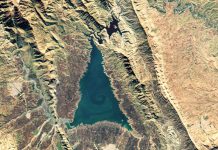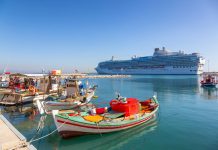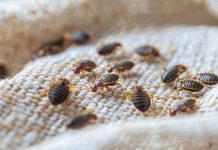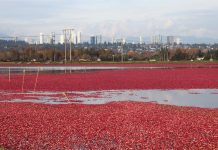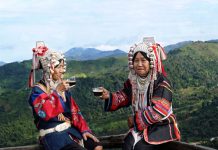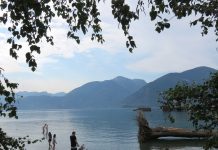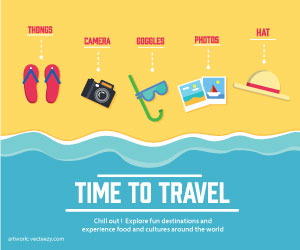Why the Land Down Under is never a boring place? Discover peculiar creatures that laugh like humans, and reptiles that terrorized the earth before dinosaurs.
Stunning and quirky comes to mind when I think of Australia, the Land Down Under. The nickname, Land Down Under was given for its location in the Southern hemisphere.
The smallest of the world’s seven continents, its survival history is etched in Mother Nature. Epic in scope, its beauty unravels across vast rugged deserts, meandering through lush tropical rainforests and savannas into the depth of the Great Barrier Reef.
Endless White Powdery Beaches and Incredible Marine Life
The world’s only “island continent” nation is embraced by three oceans: the Indian to the west, Pacific to the east, and to the south, the Southern Ocean. Picturesque communities, iconic surf beaches, palm-fringed islands, mysterious coves and bays dot the coastline that stretches over 30,000 miles.
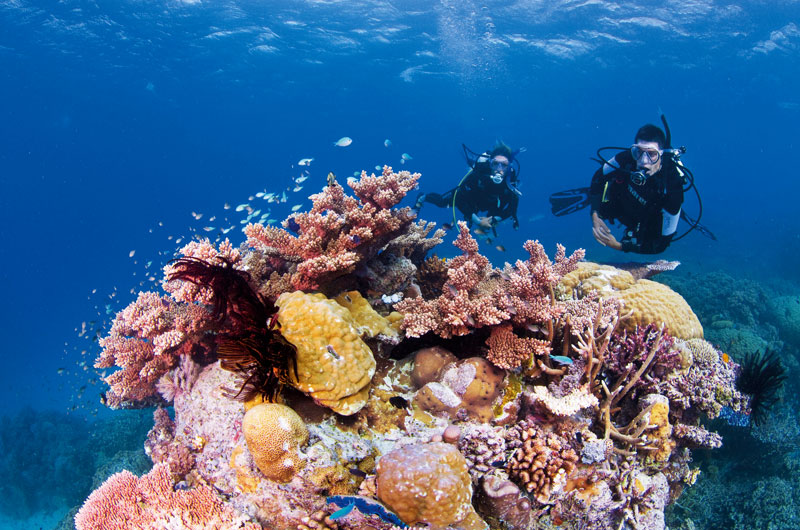
A trip to the Great Barrier Reef in Queensland is a must add-on to any travel bucket list. The World Heritage undersea world abounds with an incredible diversity of magnificent marine life and coral gardens. If diving or snorkelling is not your cup of tea, enjoy a glass bottom boat tour to view the reef.
Sydney, Australia’s east coast capital and metropolis is best known for its unique sail-like-design harbour front Opera House. The Economist Intelligence Unit’s 2016 Global Liveability Ranking placed Melbourne, Adelaide and Perth among three of the world’s top 10 best cities to live in.
Powdery White Sand, Sparkling Turquoise Water
Flashbacks of my trip to the famed Cottesloe Beach in Perth (Western Australia’s capital) brought memories of: pristine powder-white sand meeting crystal-clear water glistening in the glorious sunshine; spectacular sunset over the Indian Ocean; carefree Aussies surf boarding and basking in the sun. Aussies love affair with the beach is rooted in their cultural identity. With 10,685 beaches, the country won’t be running short of ‘fun and sun’ anytime.
Home of Peculiar Wildlife
Down Under never ceases to surprise visitors with its constant evolution over the past four billions years. The continent’s isolation from the rest of the world for millions of years, has protected the survival of many quirky creatures.
Australia is one of the world’s most bio diverse places with 378 mammal and 828 bird species, over 860 reptile species including two types of native crocodiles.

Pouched mammals like marsupials are endemic to Australia. They include animals like kangaroos, wallabies and Tasmanian devils (the world’s largest carnivorous marsupials), eucalyptus-munching koala bears and wombats.
Don’t be spooked when you hear laughter in the trees
The laughing Kookaburra, the world’s largest kingfisher makes a loud territorial call that echoes human laughter. This carnivorous kingfisher has a penchant for small snakes, rodents and fish.
Crocodile Hunting and Prehistoric Past
Queensland’s native predators, the freshwater crocodile (Crocodylus johnstoni), and saltwater estuarine crocodile (Crocodylus porosus) roam the wetland and coastal waters. Crocodiles are one of the few surviving predators related to the prehistoric giant walking crocs that terrorized the earth before dinosaurs.
For the brave hearts, Crocosaurus Cove in Darwin, Northern Territory offers cage diving tours with crocodiles. If the thrill is too lame, Carmor Plains and Australia Wide Safari or Gulpilil’s Australia are two of the Territory’s licensed hunting operators who offer wild saltwater crocodile harvesting safari.
That brings to mind, the 1986 Australian-American comedy, Crocodile Dundee. The movie was instrumental in boosting travel to Australia. Filmed in the Australian Outback and New York City, the blockbuster starring Aussie comedian, Paul Hogan was the second highest-grossing film in the U.S. that year.
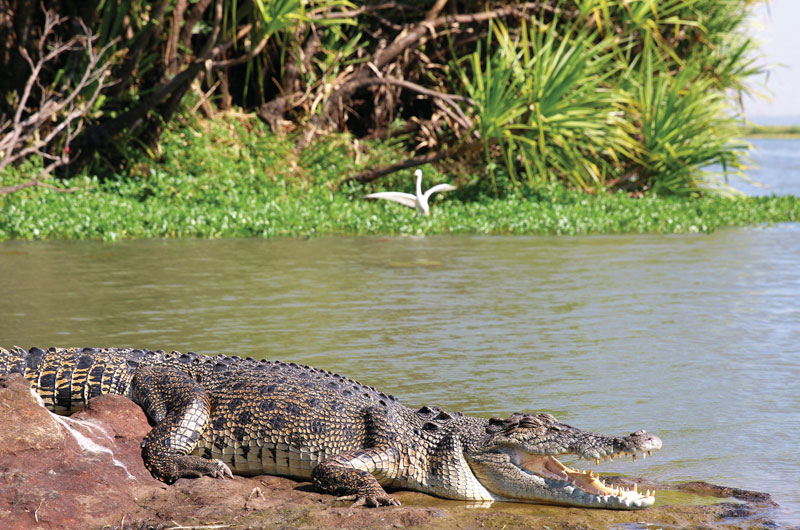
The most famous crocodile hunter is Aussie conservationist and television host, the late Steve Irwin. His risky and fearless animal wrestling antics put Australia on the map again. A petition is currently in circulation for Irwin’s face to be imprinted on the Australian $100 currency. His family currently operates the 100 acre Australia Zoo in Queensland’s Sunshine Coast.
Never Trust a Crocodile Smile
While in croc country, be croc wise and never trust a crocodile smile, warns the Queensland Government Dept. of Environment and Heritage Protection. Crocs can regrow each of their 80 teeth up to 50 times in their lifetime. They may well hold the clue to regenerating human teeth.
Grazing on Exotic Dishes and Seafood
Try kangaroo and crocodile entrees for a unique Aussie taste. Kangaroo meat is lean and rich in flavour. Texture wise, it more tender than beef and taste like deer meat. Similarly, crocodile meat is also low in fat and high in protein. Mild in flavour, akin to the taste of chicken with an exotic hint of frog legs. Crocodiles are domesticated for their skin and meat in Australia.
Kangaroo over population is a pest concern for farmers, sheep and cattle graziers. Commercial kangaroo harvesting is a self-funding pest control closely monitored by the government conservation agencies, according to a paper (by Tony Pople and Gordan Grigg) featured on the Australian Dept. of Environment and Energy website.
For the less exotic palates, there are plenty of other meat choices: lamb, beef, and a myriad of fresh seafood. Seafood lovers can delight in the exquisite Aussie abalone (marine snail), oysters, mussels, succulent shrimps and slipper lobsters like the delicious Moreton Bay bug. There is also a wide selection of fish to sample including the popular barramundi.
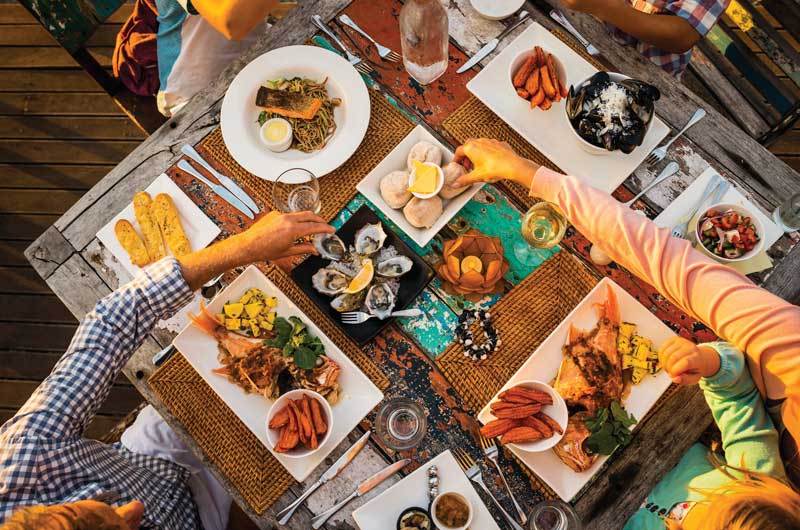
Australia is also renowned for its wine growing regions, stretching from Western Australia’s Margaret River to the Barossa Valley near Adelaide. Award-winning wine varieties include Cabernet Sauvignon, Riesling, Chardonnay, Pinot Noir Shiraz and more.
Outback and Aboriginal Cultural Experience
You never know what you find on an outback adventure. As one traveller recently experienced, looking for a washroom in the outback led to an amazing discovery of a 49,000 year-old Aboriginal settlement. That’s around the timeline when the first wave of Aboriginals landed on the Australian continent, their ancestors purportedly from Africa.
Roughly 500 different Aboriginal groups currently live in Australia. The largest population is concentrated in the Northern Territory – home to the iconic Uluru (Ayers Rock), located in Uluru-Kata Tjuta National Park.
Visits to Uluru are limited and the park’s permission is required for photography of any kind. The famous red sandstone rock is a sacred site of the Aboriginal people. The park is home to over 416 species of native plants.

Researchers confirmed that Australia holds the oldest continental crust on Earth, some 4.4 billion years old based on analysis of zircon crystals extracted from Jack Hills in Western Australia’s Mid West region.
Fascinating History: How British Prisoners Ended Down Under
Walking through Perth’s World Heritage building, the old Fremantle prison evokes a cold, yet intriguing peek into a convict’s life. It was a working prison for almost 140 years. The six-hectare site was transformed to a tourist attraction welcoming over three million visitors since its opening in 1992.
How did British convicts ended up in Australia? According to Sydney Living Museums, English convicts were sent to America up until 1782. After the American War of Independence in 1783, America refused to accept convicts from England, so convicts were transported to New South Wales in Australia.
In Australia, you will never run out of things to do – simply because it’s such a vast, evolving continent to explore. The continent is constantly moving cited a National Geographic article: Australia Is Drifting So Fast GPS Can’t Keep Up. The continental shift continues to open new exploration opportunities for visitors and researchers.
Watch Video: Think Australia: Striking Beaches, Quirky Creatures and Exotic Dishes
Links
Tourism Australia
Western Australia Tourism
Explore Queensland
Tourism Northern Territory
Voyages Indigenous Tourism Australia




















